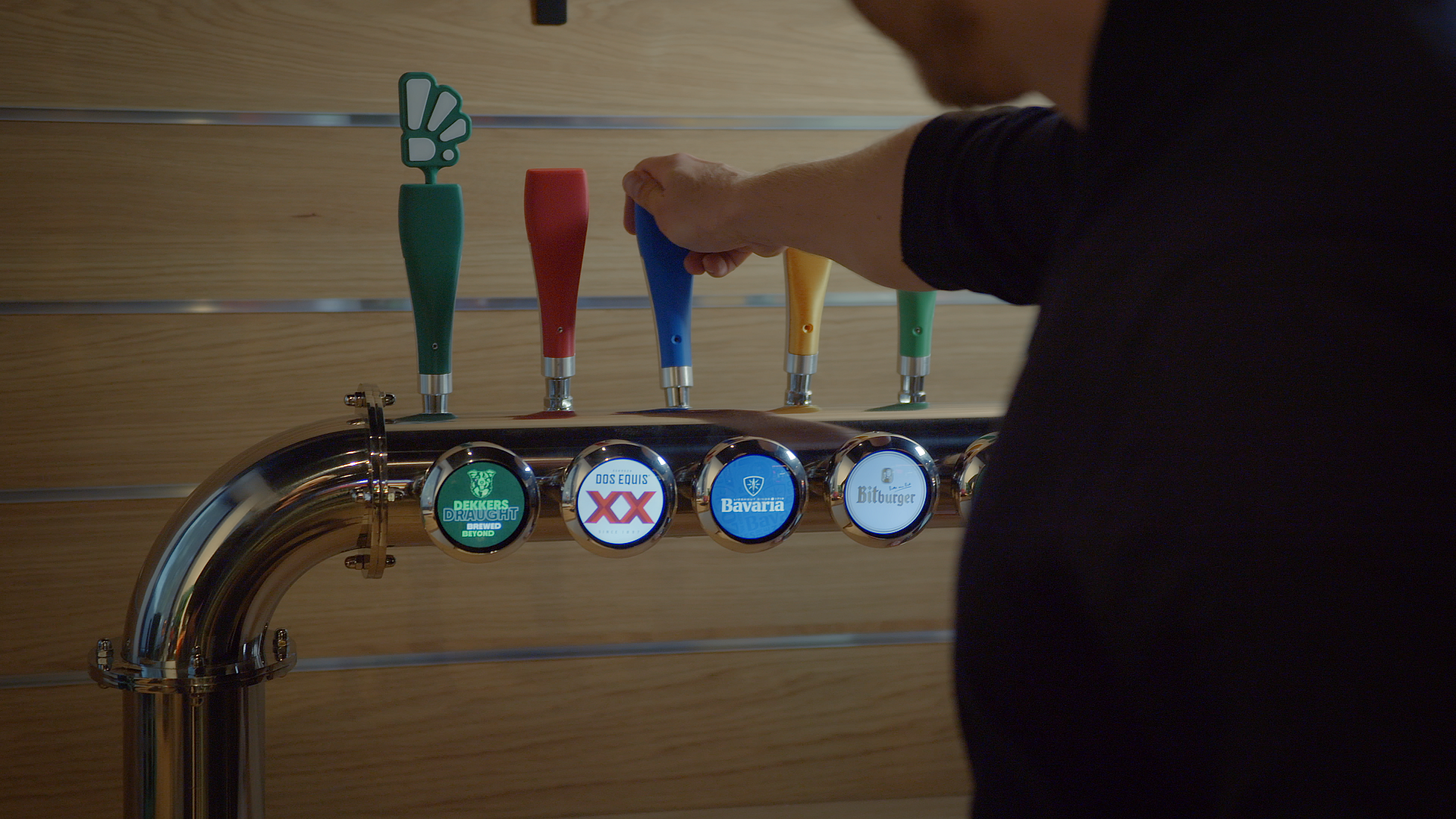TrianecT and KPN IoT speed up stroke care with the smart StrokePointer
Every minute counts in the case of a stroke. So it is important that patients get to the right hospital as quickly as possible. But what is the right hospital? This depends on the type of stroke. For a major cerebral infarction, for instance, you need to go to a center that specializes in balloon angioplasty. However, in the ambulance there is no way of determining the type of stroke. Consequently, in accordance with protocol ambulances always take patients to the nearest hospital. If this turns out not to be the right hospital, the patient has to be taken somewhere else. Precious time is lost, reducing the chances of recovery.
TrianecT wants to change this. In partnership with Amsterdam UMC, they developed the StrokePointer™. This compact device is used in the ambulance to measure brain activity and shows immediately whether a major cerebral infarction has occurred. The ambulance can then drive straight to the right hospital. KPN provides the connectivity.
From observation to innovation in stroke care
Wouter Potters, co-founder and CEO of TrianecT, recalls clearly the first observation he made in his previous role as a technical physician: “Patients used to arrive at Amsterdam UMC who could have reached the right hospital an hour earlier. And with a stroke, literally every second counts. It was a bitter pill to swallow: we could have done better, but we didn’t.”
Together with physicians, researchers and ambulance personnel, TrianecT developed a solution. The idea was to measure brain activity in the ambulance before the patient gets to the hospital. Using a smart headset with 8 dry electrodes, that is now possible within 3 minutes, including the measurement and data analysis. An algorithm analyzes the brain signals and calculates straight away the chance of a major cerebral infarction. No complicated actions, but a clear indication for the paramedic.
Why time is of the essence with a stroke
Not every stroke is the same. In the case of a minor cerebral infarction, a patient can generally be treated quickly at a regional hospital. But for a major stroke, where an important blood vessel is blocked by a blood clot, a large number of brain cells die within a short period of time through a lack of oxygen. Since 2015, a revolutionary treatment has made it possible to remove that clot, but only specialist hospitals are able to carry it out.
At present, ambulance personnel have only limited means of establishing at an early stage what type of stroke has occurred. They therefore follow the nationwide protocol: patients are always taken to the nearest hospital first. But that is not always the hospital where the right treatment, such as a balloon angioplasty in the case of a major cerebral infarction, can be carried out. This wastes around one hour of valuable time. “Our calculations show that 1 in 5 patients who, thanks to these time savings, go straight to the operating table, do not subsequently have to go into a nursing home,” says Potters. “That’s huge. For the people concerned, for their family, and for the entire chain of care.”
StrokePointer gives ambulance personnel confidence and insight
The StrokePointer™ is also a breakthrough for ambulance personnel themselves. Monique Theunissen, science coordinator at Witte Kruis Ambulancezorg, was closely involved in testing and developing the solution: “Until now, we mostly had to make decisions based on gut feeling, and that leads to frustration. You want to help someone, but you don’t have all the information. With this device, we finally have the data to make the right choice straight away. That gives confidence. To us, to hospitals and to the patient in the ambulance.”
The StrokePointer™ has been developed specifically for the hustle and bustle of emergency care. You put the headset onto the patient’s head in a single movement, while the touchscreen guides the paramedic through the measurement step by step. The result is known within a few minutes. “It had to be simple enough to allow everyone to work with it at once, without lengthy training,” Potters explains. “It’s the same as with the defibrillator: you don’t need to be a specialist to use it.” So far, more than 1,500 measurements have been done within the frameworks of scientific research, and the results show clearly that major infarctions can be recognized reliably.
Usable anywhere thanks to 5G connectivity you can rely on
The strength of the StrokePointer™ is not only the headset but also the connectivity. Ambulances operate in cities, villages and rural areas. The connection has to be dependable everywhere. So for TrianecT, KPN was the ideal partner. “We wanted a single solution that works throughout Europe. With KPN IoT’s eSIM, we can easily activate the devices remotely during production, without having to physically insert SIM cards. That reduces the time and risk enormously,” says Potters.
The data is sent via a secure 5G connection to a cloud environment and can be shared immediately with hospitals and emergency rooms. So the StrokePointer™ fits seamlessly into the digital chain of care.
On the way to European CE certification
The StrokePointer™ is now in the final stage of testing. CE certification is scheduled to be completed in 2026, after which it can be rolled out on a large scale. “The first milestone is CE certification in 2026, allowing us to put the product on the market in Europe. After that, we look at FDA approval for the American market,” says Coenraad Tamse, commercial director at TrianecT. “Our ultimate aim is for every ambulance to be equipped with a StrokePointer™, just as a heart monitor is now standard equipment for the benefit of heart patients.”
The StrokePointer™ shows what is possible when knowledge, technology and reliable connectivity converge. It is an innovation that not only saves time, but also increases the chances of recovery and saves lives.
We are proud to contribute to this impactful solution for stroke care with our connectivity. If you want to know what we can do for you, feel free to get in touch.




